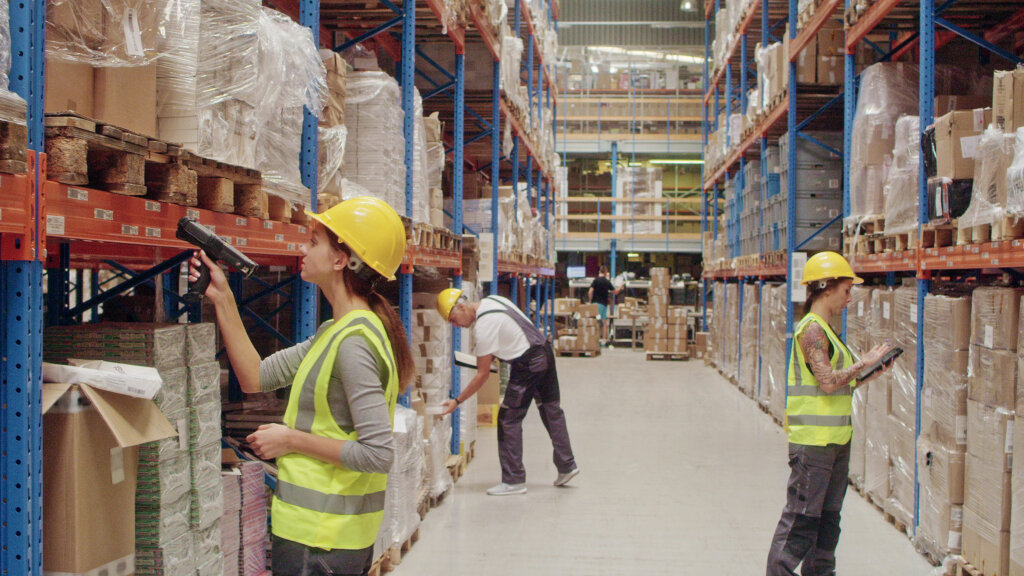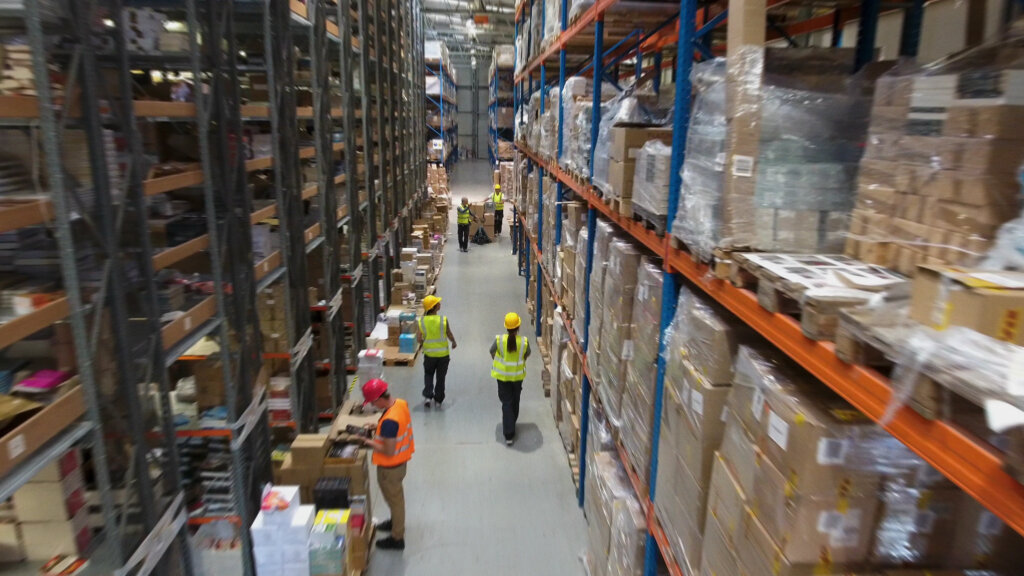How Leveraging Intelligent Video Can Help Distribution Centers Meet Demand
Today’s video-based business intelligence can help distribution center managers with asset tracking, inventory management, operational efficiency, and profitability
Filed under: Loss Prevention, Video-Based Business Intelligence
The retail sector saw a rapid increase in ecommerce as a result of the Covid-19 pandemic. Not only are consumers shopping online more frequently, they also expect their packages to arrive at their doors within a day or two. The increased demand and faster delivery expectations have caused tremendous mental and physical stress on warehouse managers and staff. The peak season now lasts all year long. Expectations on employees to work extended hours for pay that has struggled to keep up with inflation has created more opportunity for loss due to theft, error, and accidents, and also led to increased safety and liability concerns. It’s not surprising that today’s warehouse managers are expecting more from their video surveillance solutions than ever before.
Beyond the basics: a complete video surveillance solution
Traditionally, warehouse video surveillance was focused on perimeter security and access control for loss prevention. There’s no doubt that video is still a very effective security and loss prevention tool, especially with analytics like object detection or removal. Video helps managers keep track of packages, uncover theft, and can also deter bad behavior by making would-be thieves think twice about their actions.
But today’s video surveillance solutions can do so much more than just security and loss prevention. More and more managers rely on video-based business intelligence – meaning business data that can be gathered from surveillance video – to help them run their operations more effectively. It’s usually generated by integrating other kinds of data with video. For example, barcode scanner data can be combined with high-definition surveillance video to investigate losses faster and track and manage inventory more effectively. Managers can also use video analytics powered by Artificial Intelligence (AI) to evaluate employee productivity. For example, a camera with an intrusion detection analytic will trigger an alarm every time an employee or vehicle (forklift) enters into a defined zone. The video can be tagged and evaluated to help measure productivity. These types of integrations can help uncover valuable information and drive profitability.

Locate product quickly and easily
Another key benefit of using an integrated video system in a distribution center setting is that it can be combined with high-performance fixed radio frequency identification (RFID) technology. This enables warehouse managers to enhance loss prevention capabilities and visually verify events to draw additional business insights. By combining data from RFID-tagged items with high-definition surveillance video, it’s possible for companies to quickly search events by date, time, brand, product type, serial number, or electronic product code (EPC). You can access the associated video with a single click to see exactly when and how an item entered or exited a location. Users can conduct instant searches centrally from any networked location and simultaneously across multiple locations to speed any investigation they need to do.
For example, you can discover in minutes the last time a specific RFID-tagged item was present in your warehouse by searching on the product serial number and reviewing the recorded video. Similarly, it can use the same search capability to resolve more systemic – and potentially costly – issues, such as tracking the boxes or pallets reported missing from inventory at the end of each month. With this type of solution, you can go beyond traditional inventory management and actually see your inventory with just a few clicks of your mouse.
Scalability is key
An assortment of IP-video cameras running on network video recorders (NVRs) can be an optimal solution, particularly for small to medium-sized distribution centers like retail box stores that have been converted to warehouses. This is especially true when IT staff is limited, since NVRs are a plug-and-play solution. You simply connect them to your system-compatible cameras and you’re ready to go. Choosing a recorder from a reputable manufacturer means it will offer features that ensure exceptional performance and reliability.
At a larger distribution center, a software-based video management system (VMS) may be more beneficial. A VMS is incredibly scalable because it can accommodate a very high number of IP cameras – up to 3,000 on just one server in some cases. Such a solution facilitates the efficient recording, storage, and retrieval of video for all of your facility’s cameras, as well as the data from third-party cameras and access control systems, should you choose to integrate them.
Choosing a true enterprise VMS also helps to maximize overall system performance because it has built-in features that can help control bandwidth and save on storage space, such as options for selective video recording, video removal, and the ability to set maximum retention times, which can help make the most efficient use of storage resources.
Regardless of whether you choose to use NVRs or a VMS, reliable enterprise system management software can help to efficiently manage your video surveillance system architecture and dramatically simplify the day-to-day job of video system administration. Depending on which vendor you choose, enterprise management can be available as an on-premise or cloud-managed deployment.

Cloud-based options
There are many ways to leverage the cloud when looking at a video solution for a warehouse.
If your warehouse is very large and has a lot of IP cameras, streaming all of your video to the cloud may not be possible due to bandwidth and storage constraints. But a hybrid cloud solution – where some video is backed up in the cloud, and the system management takes place in the cloud – is very possible.
A cloud-managed video surveillance solution combines the convenience and cost savings of the cloud with local recording devices to help distribution centers better manage their enterprise systems, store and share video, improve operations, and drive profitability.
With a hybrid cloud-managed solution, your central video server can be located offsite and you don’t have to rely on hiring in-house resources to monitor devices and troubleshoot issues, as this is all done by a team of trained professionals who work for your provider. You can often enjoy flexible payment options, such as a monthly payment plan or other plan tailored to your facility’s needs. In many cases, you can conveniently store and share evidence in the cloud and access your cameras with a web-based client.
As today’s demands for product and speed of delivery increase, distribution center managers need video surveillance solutions that go beyond security and loss prevention and provide them with business intelligence to better run their operations. Finding the right solution can make a world of difference to not only operational efficiency but, most important, profitability.